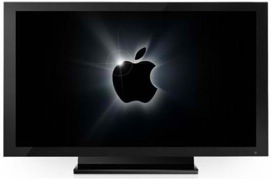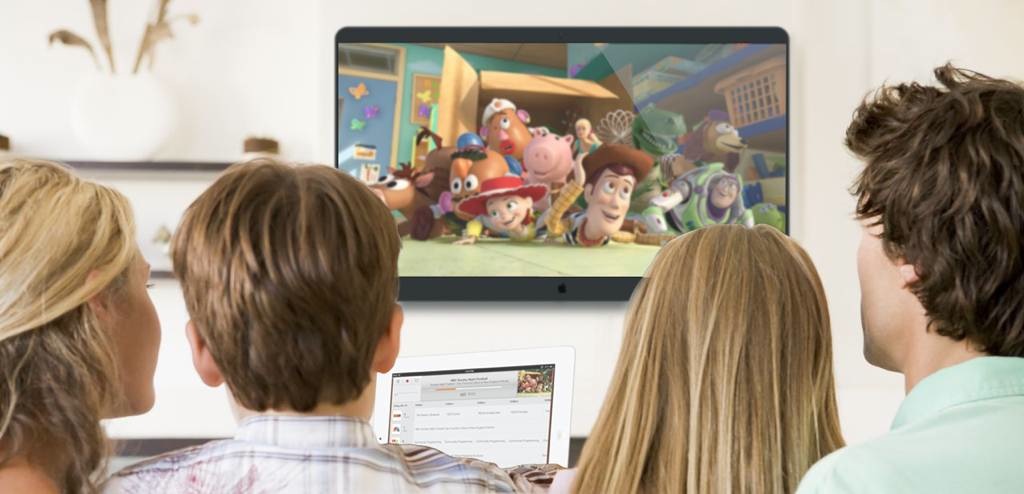The world’s leading chip maker Intel, which supplies processors for Apple’s Mac notebooks and desktops, is reportedly prepping to launch its rumored virtual cable TV service and set-top box because the company was frustrated with “everyone doing a half-assed Google TV so it’s going to do it themselves and do it right”, according to sources that spoke with TechCrunch.
Intel allegedly “has a plan to overcome licensing hurdles” that Apple reportedly has been facing for some time in its attempts to woo big-budget Hollywoood studios. The semiconductor giant will apparently roll out the service on a city-by-city basis rather than nationwide, opting to cut content deals on a per-market basis.
Apple, of course, has long been rumored to be testing prototypes of a full-fledged 46 to 55-inch television sets as the living room remains “an area of intense interest” for the Cupertino giant…
The plan, according to TechCrunch, is to target folks who want streaming TV access “but don’t want to entirely cut the cable cord and lose key content like sports”, which Intel hopes to accomplish with its own subscription TV service + set-top box combo.
A source in the video distribution industry directly familiar with Intel’s plans and content dealings tells TechCrunch the semiconductor company is dead serious about getting its chips into the living room.
After its effort to convince smart TV manufacturers to use its chips in the initial launch of Google TV failed a few years ago, it’s decided to go it alone. The source said that Intel was frustrated with “everyone doing a half-assed Google TV so it’s going to do it themselves and do it right.”
Sounds to me like Intel is just jealous it hasn’t managed to put any of its chips inside “half-assed Google TV” boxes.
A recent story by Chinese-language iphone.tgbus.com claimed Intel is collaborating with Apple on a smart watch of sorts that incorporates Bluetooth 4.0 technology, though it’s unclear why Apple would collaborate with another company on a design for its own product.
In November, Forbes ran a story saying Apple might agree to switch to Intel’s x86 architecture for the iPad, another baseless talk if you know Apple has more than a thousand silicon engineers under its roof who’ve been producing designs for Apple’s mobile chips used in iPhones, iPads and iPods.
Intel supplied Apple with baseband chips for iPhones by way of Infineon aquisition, but the engine that runs iOS devices is being designed by Apple in-house, and fabbed in Samsung’s $14 billion Austin, Texas chip plant.
The more credible Bloomberg also reported that Apple’s newly-minted SVP of Technologies Bob Mansfield is working on a secret project to remove Intel chips from Macs by 2017 because Apple’s silicon team is confident that the chip designs used for the company’s mobile devices will one day be powerful enough to run its desktops and laptops.
As for TV talk, Apple’s rumored HD TV set has been speculated to adopt features like Siri voice control, motion gestures, FaceTime video calling, third-party apps and more. The biggest name in TVs, Samsung, meanwhile is teasing a new TV launch at CES 2013.
http://www.youtube.com/watch?v=IAV-Kkq-GtY
Time Warner CEO Jeff Bewkes recently speculated Apple could tap its “good interface and navigation skills” to solve a fundamental problem with the television business. Brightcove CEO and chairman Jeremy Allaire thinks a standalone TV set could be a $5-10 billion opportunity for Apple.
He said:
With a single launch, Apple will extend the iOS gaming distribution ecosystem into the living room and invent new categories of gaming through the interaction of iOS devices with Apple TV.
The mostly credible The Wall Street Journal also reported that Apple is working with component suppliers in Asia to test several TV-set designs.
With price estimates ranging from $1,500 to north of $2,000, a survey by AlphaWise and Morgan Stanley indicated that one out of each two respondents would be willing to pay a premium for the better Apple television interface.
Would you?


